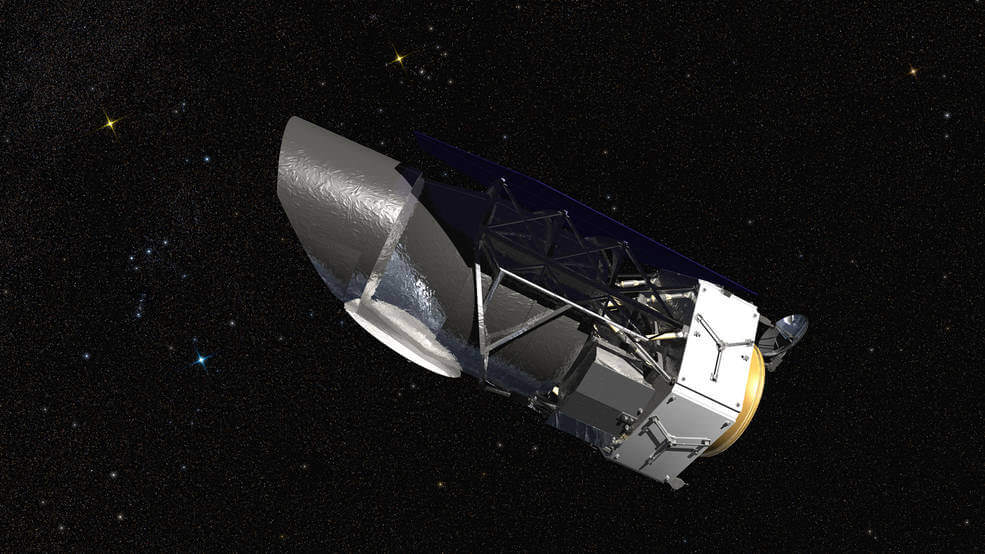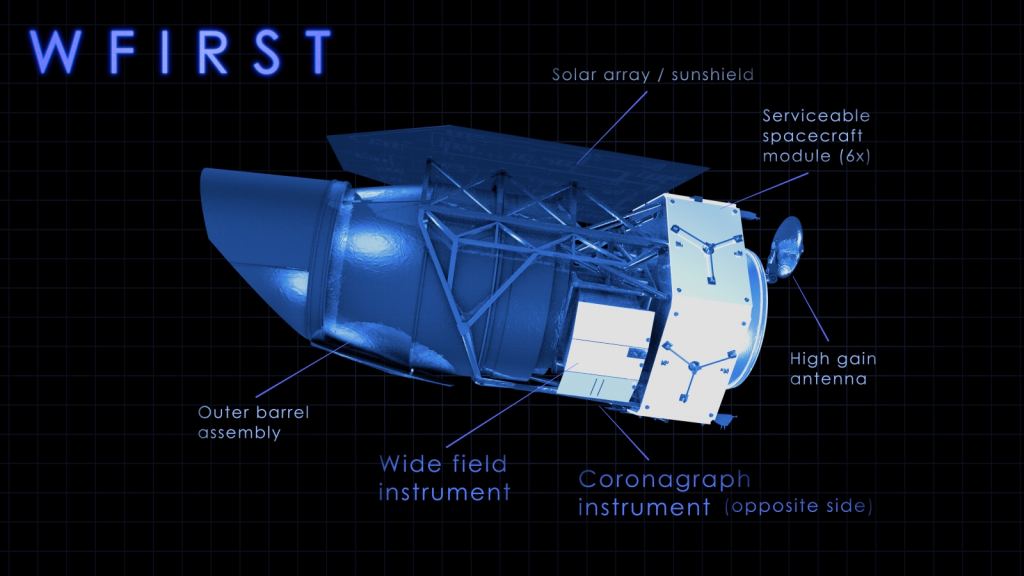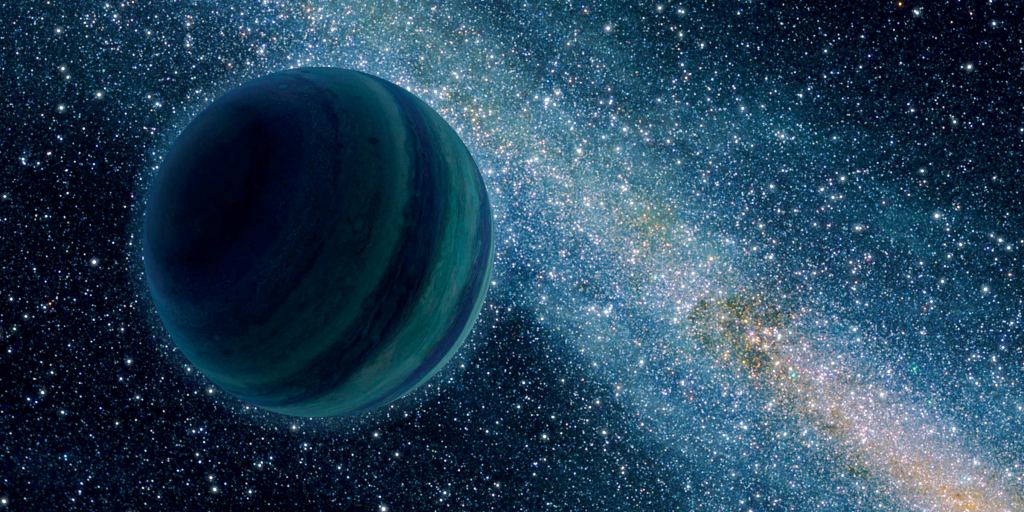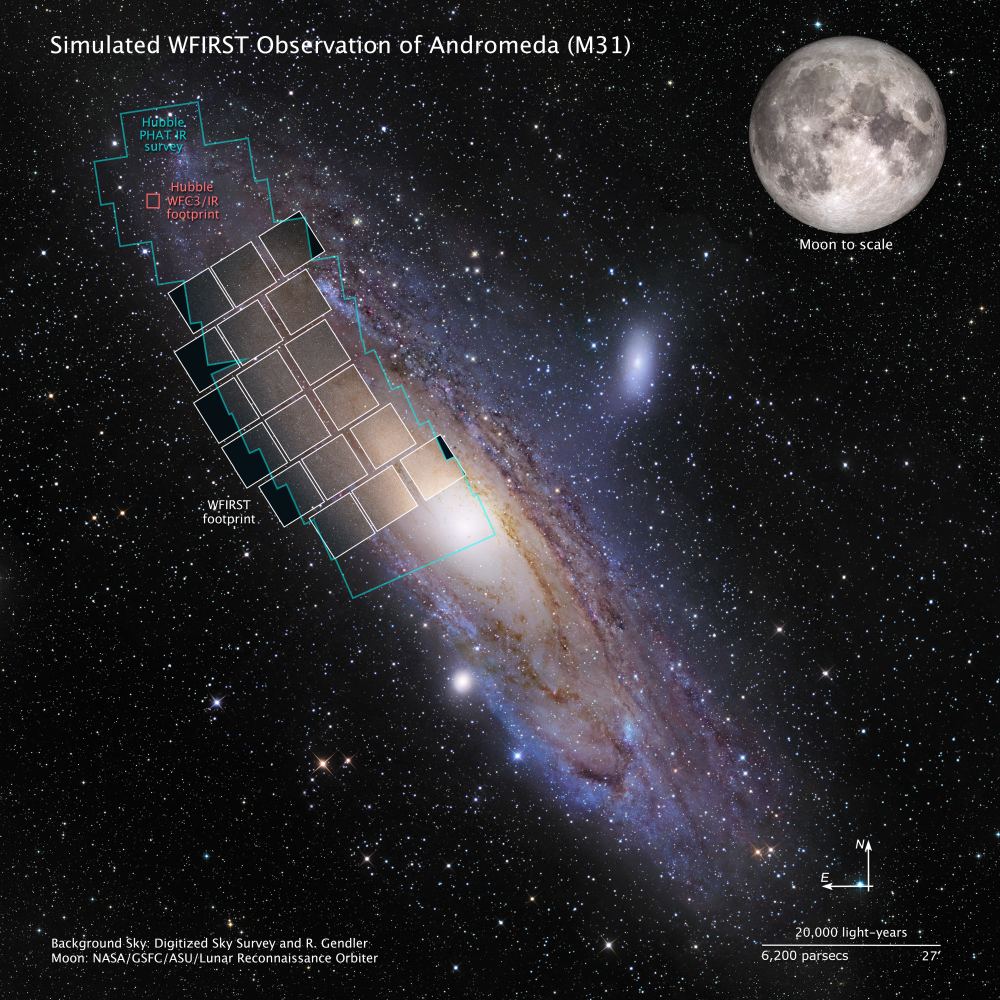Soon, astronomers and astrophysicists will have more observing power than they know what to do with. Not only will the James Webb Space Telescope one day, sometime in the next couple years, we hope, if all goes well, and if the coronavirus doesn’t delay it again, launch and begin operations. But another powerful NASA space telescope called WFIRST has passed an important stage, and is one step closer to reality.
WFIRST stands for Wide Field Infrared Survey Telescope. It’ll have a 2.4 meter lens, the same size as the Hubble’s lens. But WFIRST will have a wide field of view that’s 100 times larger than Hubble’s. It’ll carry two scientific instruments: the Wide Field Instrument (WFI) and a coronagraphic instrument. It’ll also be equipped with a 300 megapixel camera.
Though the word Infrared is in the telescope’s name, it will also observe in visible light. A NASA press release says WFIRST will be able to “… detect faint infrared signals from across the cosmos while also generating enormous panoramas of the universe…” It’s slated to launch some time in the mid-2020s.

After recently passing a critical milestone, NASA gave WFIRST the go-ahead to begin hardware development and testing. WFIRST’s design is already well-advanced, and the space telescope uses a lot of technology that is already mature. That’s one of the reasons that the project has a projected development cost of only about $3.2 billion, which is much lower than JWST’s price tag of about $10 billion.
WFIRST’s design calls for a lot of technology that is already tried and true, especially Hubble-quality telescope components. NASA also says that much of the design is based on lessons learned on the James Webb’s arduous path to completion.
The next step for WFIRST is to finalize the mission design. NASA will build test units and engineering models to see if the design will withstand both launch and eventual operations in space. After launch, WFIRST will enter a halo orbit at the Sun-Earth LaGrange 2 point, the same as the JWST.

“With an unprecedented combination of breadth and depth, WFIRST will open a new era in viewing our Universe.”
From the NASA Video “Simulated Image Shows the Power of NASA’s WFIRST.”
WFIRST has really interesting science objectives. As an infrared telescope, it’s suited to address larger questions about the Universe. One of the goals is to answer some of the questions about dark energy, the force driving the expansion of the Universe. Cosmologists want to know how dark energy has changed over time, and how and why the expansion of the Universe is accelerating.
The telescope will also work on exoplanets, one of the most important topics in astronomy. We still don’t know how common solar systems like ours are, and how habitability is determined. WFIRST will help astronomers answer those questions.
It’ll make use of its coronagraph to directly image large exoplanets. It’ll also take spectra of those planets to determine their atmospheric composition, something that will help us detect biosignatures.
One of WFIRST’s most interesting objectives is an exoplanet census. NASA plans to use the phenomenon of microlensing to complete a statistical census of exoplanets in the Milky Way. Microlensing is when an unseen planet outside our own Solar System moves in front of a distant background star. The planet’s gravity acts as a lens, magnifying the starlight and making it appear brighter. NASA expects that WFIRST will discover thousands of exoplanets this way, with some documents suggesting 70,000 exoplanets.

The telescope will also address other questions as they’re determined. Space science—and space telescopes—are full of surprises, so there’ll likely be discoveries we can’t predict beforehand, and some surprising results.
WFIRST will provide the same high-resolution images as the Hubble, but with a much larger field of view. A couple months ago, NASA released a video showing WFIRST’s power. As the video shows, a Hubble portrait of the Andromeda galaxy required over 400 individual images to be captured and composed into one. It also took the Hubble 4 years to do it. The powerful WFIRST will be able to create a similar mosaic with only two images. And it’ll only need about 90 minutes to capture each of the two.
Though WFIRST is an infrared telescope, it differs from the JWST—which is also an infrared ‘scope—in several ways. Whereas WFIRST will provide panoramic views of the cosmos, JWST is much more sensitive in the infrared. JWST’s sensitivity comes at a price though. It requires extreme cold to perform those observations, and the telescope has a complex and critical sun-shield to keep it cool. That sun-shield has to be folded and packaged into the rocket for launch, and deployed before the JWST begins operations.
WFIRST is also an infrared telescope, but it doesn’t require the same low operating temperature. It still needs a cooling system, but not an unwieldy and technologically complex sun-shield. JWST’s operating temperature is 50 Kelvin (-223° C or -370° F). WFIRST’s operating temperature is not finalized yet, but NASA design documents says it’s around 200 Kelvin (-73 C or -100 F).
Both JWST and WFIRST are infrared ‘scopes, and their missions may overlap in some ways. When WFIRST finds something of particular interest, JWST can observe it with greater infrared sensitivity. This type of overlap is a building block of telescope missions and designs. For example, the upcoming Vera C. Rubin Observatory, which should see first light later this year, will survey the sky for transient objects. When something like a supernova is spotted, other telescopes will be tasked with observing it more closely.
For now, WFIRST is only funded through to September 2020. NASA is taking that administrative precaution because they want to finish the James Webb and get it operating. Having two large and complex projects ongoing at the same time—both space telescopes—complicates both projects.
WFIRST’s tentative launch date is sometime in the year 2025. Its planned mission duration is five years.
MORE:
- Press Release: NASA Approves Development of Universe-Studying, Planet-Finding Mission
- NASA: Wide Field Infrared Space Telescope
- Technical Paper: The Wide Field Infrared Survey Telescope: 100 Hubbles for the 2020s
- Universe Today: WFIRST Gets its Coronagraph, to Block the Light of Stars and Reveal Their Planets

